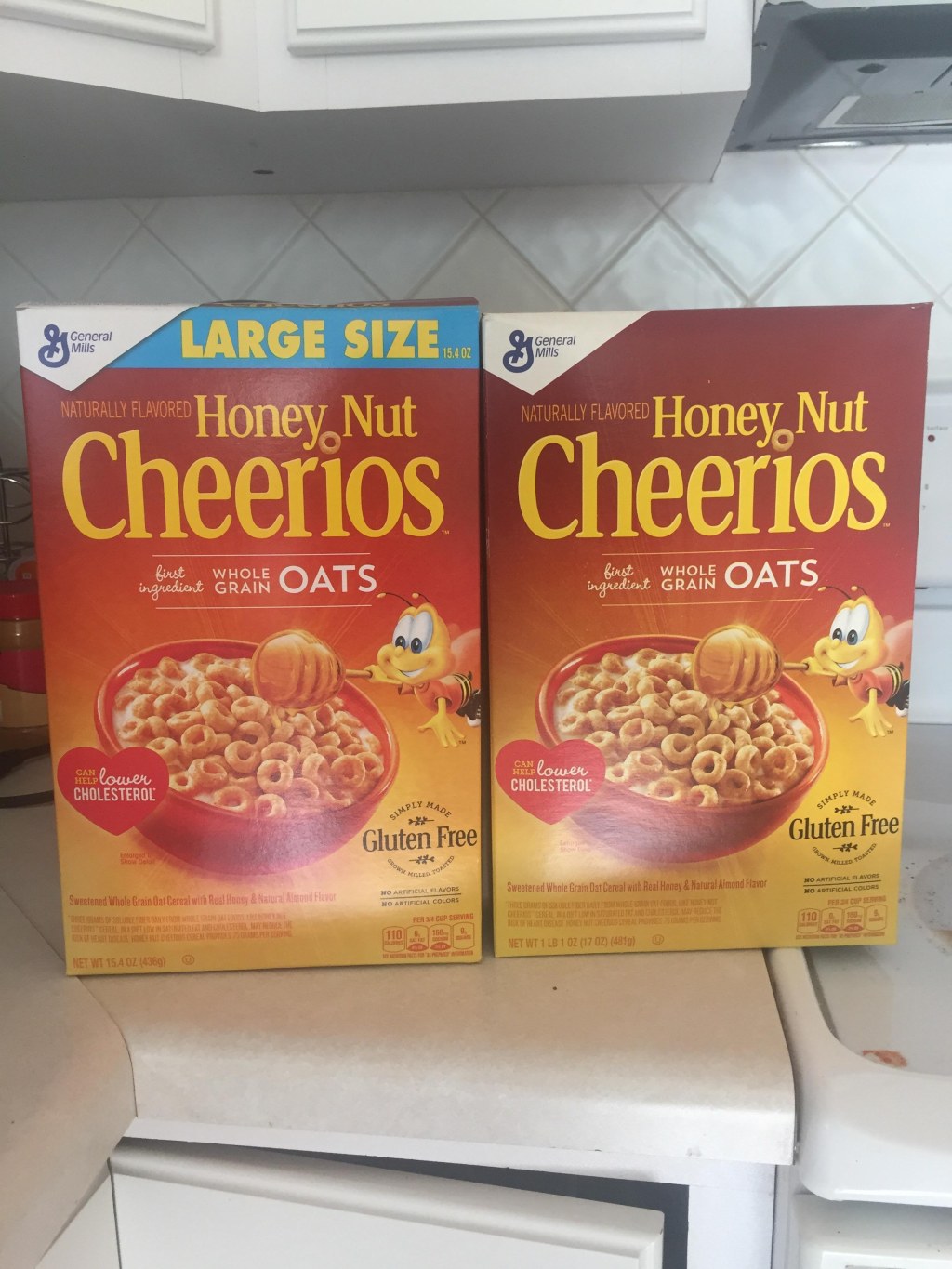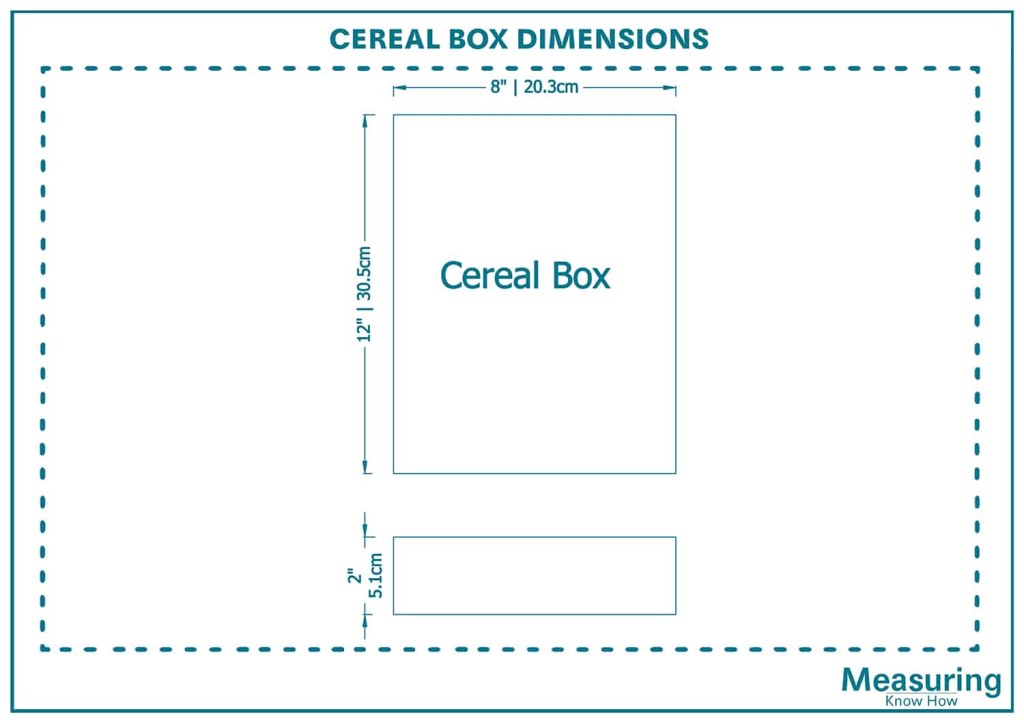Unveiling The Power Of Standard Cereal Box Size: A Game-Changer For Your Breakfast Routine!
Exploring the Standard Cereal Box Size
Introduction
Greetings, Cereal Connoisseurs! Are you a cereal enthusiast who enjoys starting your day with a delicious bowl of your favorite cereal? If so, you may have noticed that cereal boxes come in different sizes. In this article, we will delve into the standard cereal box size, providing you with all the information you need to know. So grab a bowl of your favorite cereal and let’s dive in!
2 Picture Gallery: Unveiling The Power Of Standard Cereal Box Size: A Game-Changer For Your Breakfast Routine!


What is the Standard Cereal Box Size?
🔍 When it comes to the standard cereal box size, it refers to the typical dimensions of cereal boxes found on store shelves. The size of cereal boxes may vary slightly between different brands and countries, but there are general standards that most manufacturers adhere to.

Image Source: redd.it
Standard cereal boxes are rectangular in shape and typically measure around 7 inches in height, 6 inches in width, and 2-3 inches in depth. These dimensions are designed to fit neatly on pantry shelves and provide enough space to hold a standard amount of cereal.
Who Determines the Standard Cereal Box Size?
🔍 The standard cereal box size is not determined by a single governing body. Instead, it is influenced by industry standards and market demands. Cereal manufacturers take into account various factors such as consumer preferences, packaging efficiency, and retail space considerations when determining the size of their cereal boxes.
While there is no official standardization, cereal brands often follow similar dimensions to ensure consistency across their product lines. However, it’s important to note that some brands may deviate from the standard size to differentiate their products or meet specific marketing objectives.
When Did the Standard Cereal Box Size Originate?

Image Source: measuringknowhow.com
🔍 The standard cereal box size has evolved over the years to meet the changing needs of consumers and the cereal industry. In the early 20th century, cereal boxes were larger and bulkier, often made from cardboard or metal. As packaging technology advanced and consumer preferences shifted, cereal boxes became more compact and lightweight.
In the mid-1950s, General Mills introduced the concept of the family size cereal box, which was larger than the standard size and aimed at accommodating larger households. This innovation paved the way for different size options in the cereal market, catering to various consumer needs and preferences.
Where Can You Find Standard Cereal Box Sizes?
🔍 Standard cereal box sizes can be found in grocery stores, supermarkets, and online retailers worldwide. Whether you’re shopping in the United States, Europe, Asia, or any other region, you can expect to come across cereal boxes that adhere to the general dimensions we discussed earlier.
Next time you visit your local grocery store, take a moment to observe the cereal aisle and you’ll notice the standard cereal box sizes neatly arranged, waiting to be chosen by cereal enthusiasts like yourself.
Why Do Cereal Boxes Come in Standard Sizes?
🔍 The standard cereal box sizes serve several purposes for both manufacturers and consumers. Let’s explore the reasons behind this standardization:
Efficient Packaging and Distribution
Standard sizes allow cereal manufacturers to optimize their packaging and distribution processes. By adhering to consistent dimensions, they can efficiently stack, store, and transport cereal boxes, reducing costs and ensuring that products reach retailers in good condition.
Retail Space Optimization
Standard sizes also benefit retailers by making it easier to display cereal boxes on shelves. With uniform dimensions, store owners can create organized and visually appealing displays, maximizing the use of shelf space. This allows for easier stock replenishment and a more enjoyable shopping experience for customers.
Consumer Familiarity
Standard cereal box sizes have become familiar to consumers over time. When purchasing cereal, customers know what to expect in terms of quantity and can easily compare products based on their size. This familiarity builds trust and makes it convenient for shoppers to incorporate cereal into their routine.
How Does Standard Cereal Box Size Impact Consumers?
🔍 Understanding the impact of standard cereal box sizes on consumers is essential. Let’s take a closer look at the advantages and disadvantages:
Advantages
1. Portion Control: Standard cereal box sizes help consumers manage their portion sizes, preventing overconsumption and promoting a balanced diet.
2. Storage Convenience: The uniform dimensions of cereal boxes make it easier to organize and store them in pantries or cabinets, optimizing space utilization.
3. Consistent Pricing: Standard sizes allow for consistent pricing across different brands and varieties, making it simpler for consumers to compare prices.
4. Brand Recognition: Familiarity with standard cereal box sizes helps consumers identify their favorite brands quickly, enhancing brand recognition and loyalty.
5. Accessibility: Standard sizes make it easier for consumers to find the cereal they want, as they can quickly locate them on store shelves.
Disadvantages
1. Limited Variety: Standard cereal box sizes may limit the range of options available to consumers, especially if they are looking for unique or specialty products.
2. Bulk Purchases: Larger households or individuals who consume cereal frequently may find that standard sizes do not meet their needs, requiring more frequent purchases or purchasing multiple boxes.
3. Packaging Waste: Standard sizes may result in excess packaging waste for consumers who prefer buying in smaller quantities or have specific dietary requirements.
4. Higher Costs: Some consumers may feel that the standard sizes do not offer value for money, especially if they prefer buying in bulk or have specific preferences that are not met by the standardized options.
5. Storage Constraints: For individuals with limited pantry space, standard cereal box sizes may pose storage challenges, especially if they prefer to stock up on multiple varieties.
Frequently Asked Questions (FAQ)
1. Are all cereal boxes the same size?
No, while most cereal boxes adhere to standard sizes, some brands offer unique sizes to differentiate their products or cater to specific consumer needs.
2. Can I recycle cereal boxes?
Yes, cereal boxes are recyclable in most recycling programs. Remember to remove any plastic liners or bags before recycling.
3. Do different box sizes contain the same amount of cereal?
No, different box sizes may contain varying amounts of cereal. The size of the box does not necessarily reflect the quantity of cereal inside.
4. How long can I store cereal in its original box?
To maintain freshness, it is recommended to consume cereal within a few months of opening the box. If you need to store it for longer periods, consider transferring it to an airtight container.
5. Can I repurpose cereal boxes?
Absolutely! Cereal boxes can be repurposed for various creative projects such as storage containers, organizers, or even arts and crafts activities.
Conclusion
In conclusion, understanding the standard cereal box size provides valuable insights into the packaging and distribution practices of cereal manufacturers. While standardization offers benefits in terms of efficient packaging, retail optimization, and consumer familiarity, it also presents some limitations in terms of variety and individual preferences. By being aware of the standard cereal box size, consumers can make informed choices and ensure that their favorite cereal always finds a place in their pantry. So next time you reach for that cereal box, remember the thought and consideration that goes into its size!
Final Remarks
🔍 The information provided in this article is intended to serve as a general guide to the standard cereal box size. It is essential to note that certain brands or regions may deviate from the standard sizes discussed. Additionally, packaging dimensions may undergo changes over time due to evolving industry trends and consumer demands. For precise and up-to-date information, we recommend referring to the specific product packaging or consulting the manufacturer directly. Happy cereal shopping and may your breakfasts be filled with delightful crunchiness!
This post topic: Cereal



